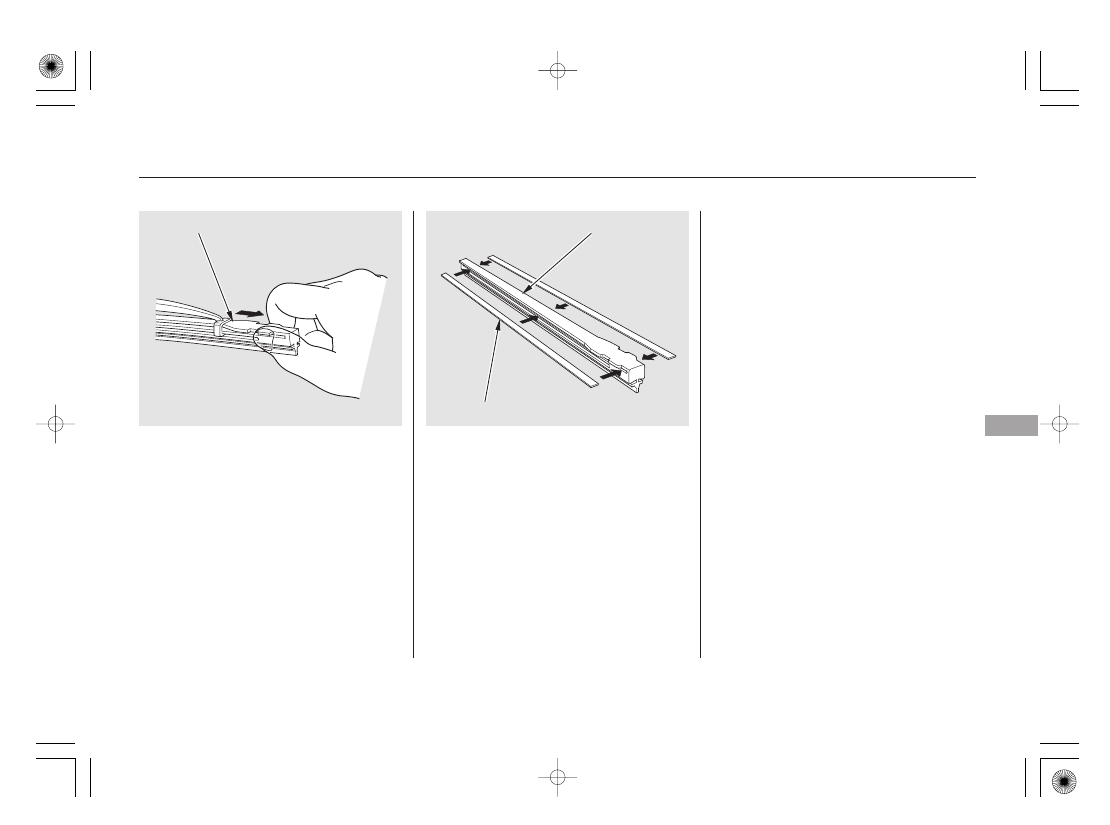Acura RL (2011 year). Manual - part 31

Examine the new wiper blades. If
they have no plastic or metal
reinforcement along the back
edge, remove the metal
reinforcement strips from the old
wiper blade, and install them in
the slots along the edge of the new
blade.
Slide the new wiper blade into the
holder until the tabs lock.
Reinstall the blade assembly to the
wiper arm and tighten the two
screws securely. Reinstall the
cover by pushing it in.
Set the wiper arms back on the
windshield. Adjust the windshield
wipers to their previously parked
position.
Remove the blade from its holder
by grabbing the tabbed end of the
blade. Pull up firmly until the tabs
come out of the holder.
4.
5.
6.
7.
8.
Wiper Blades
Ma
int
e
na
nce
479
BLADE
BLADE
REINFORCEMENT
10/08/04 20:05:57 31SJA660_484